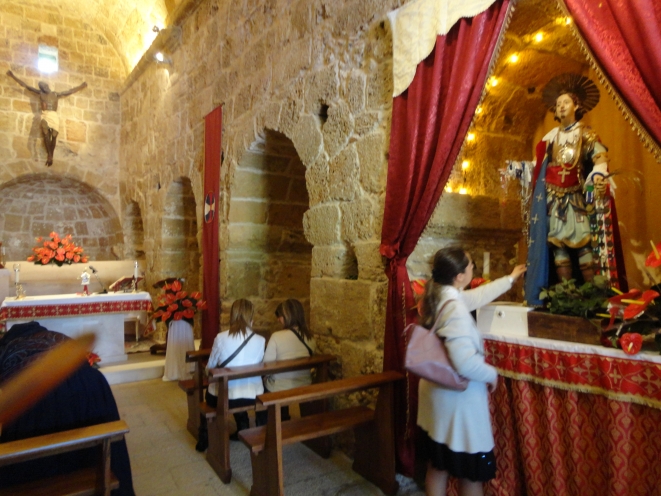The plague of 1656 and a vow that is repeated for over 350 years
For understanding the meaning that is both religious and historic and that concerns every anniversary which is repeated on time, it is necessary to begin from the main reason that caused everything. About the veneration of Saint Efisio, you need to make a jump of more than 350 years and to come back to 1656.
In those years there is the spark which created this deep adoration. During the time, faith and tradition have been melting and the mystery of the rite has been building and has been becoming richest of new details for being transmitted over the years. They were hard years those between 1652 and 1656: an invasion of locusts and the terrible plague. That ferocious, sly and horrible disease came also in Sardinia, probably carried by a ship. In a short time, there was a big spread everywhere, propagating death and terror.
Every day, in the Island, there were hundreds of dead people. Indeed, Sardinian population have decimated in the course of a few years. The plague, propagated in the North of Sardinia came to Cagliari in 1655 but the worst arrived next year. 1656 was a terrible year for Cagliari. In the first months of that year, the city was considered contaminated. People who had the disease were many; there were dozens and dozens of dead people. The situation became dramatic in a short time. In that epoch, Sardinia, that was poor and underdeveloped, could not refer to the science and the only choice concerned raising own eyes towards the sky and praying in order that the terrible plague finished. The prayers and the supplications of the islanders, and then of the citizens of Cagliari, focused the attention on Saint Efisio.

For this reason, the desperate city directed its attention to the Saint, in order that he could release it from the plague, promising solemnly that if the plague had been finished, every year citizens would have walked through the same path traversed by the Saint on the occasion of his martyrdom, when he was transferred from the prison of Stampace to Nora for the execution in 303 A.D. After a few month, the plague loosened the grip and it disappeared completely in the spring of 1657.
The citizens of Cagliari and the whole Sardinian population, freed from the plague, could loosen the vote done the previous year. From that far May 1657 up to now, citizens performed the duties of that promise. Some people hesitated the real historical importance of the Saint, who was the official of Roman Army, coming from a town of Asia and converted to Christianity when he was sent in Sardinia.

For people that trust in God, evidences are not important and it does not need to have some proof about the historical importance of Saint Efisio, that moves on the weak border between history and legend. So, his fame cannot be the daughter of its real historical existence, but it is completely centered on the faith. The statue of the Saint-warrior Efis, that has both the sword and the palm of the martyrdom and the cross on the palm of the hand, has been always accompanied in the path from Cagliari to Nora every year, despite of the problems of 1794, the flood of 1907 and the War of 1943, as further proof of the fact that the devotion around the figure is big.
Efixeddu, called by some genuine citizens of Cagliari, certainly, was a martyr in a land marked by the martyrdom, and it was not seen as such a supernatural being, but as a direct and modest figure that admired the whole Sardinia becoming Sardinian citizen. Maybe it is one of the reasons according to which he came unharmed up to now.